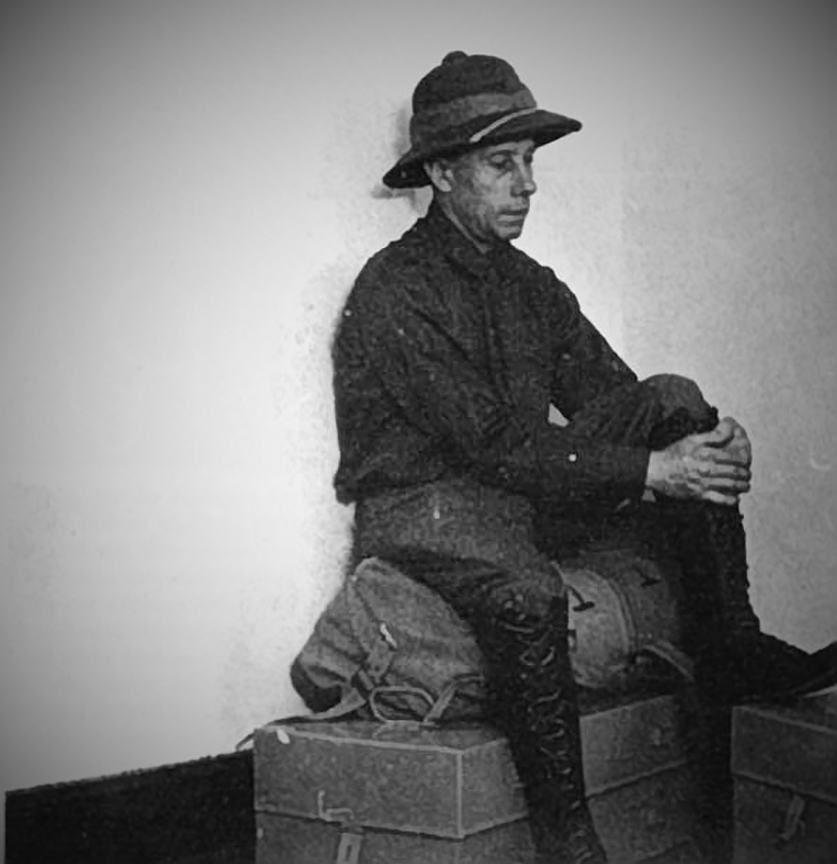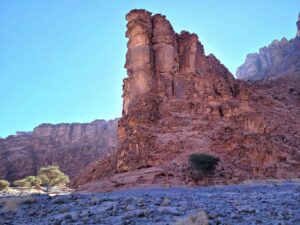In 1991, I gave a talk about my ethnographic fieldwork with the Labrador Innu in the library of Na-Bolom (House of the Jaguar) in San Cristobal de las Casas, Chiapas, Mexico. The facility’s 90-year-old owner, environmental activist and photographer Gertrude “Trudy” Blom, introduced me to the dozen or so individuals in the audience. After my talk, I sat down for the Q&A, and Trudy said, “You are sitting in B. Traven’s favorite chair…”
Upon hearing this remark, I felt honored. “Did you ever meet Señor Traven?” I asked her.
“No,” she replied, “but my husband Frans knew him well.” Frans Blom, who died in 1963, was a Danish explorer and archaeologist who is sometimes called “the Indiana Jones of Chiapas.” He seems to have known everyone who ventured into these parts with exploration on their mind.
The reader of this essay may be familiar with Traven as the author of (among other books) The Treasure of the Sierra Madre, which director John Huston made into a movie starring Humphrey Bogart. The reader may also know that Traven’s identity was such a mystery that he was thought to be an illegitimate son of Kaiser Wilhelm II, author Jack London, a convict from Devil’s Island, the Bavarian anarchist Ret Marut, a German jack-of-all-trades named Otto Max Fiege, or even Frans Blom himself. But the reader may not know that, regardless of his identity, Traven was an explorer and ethnographer.
In May 1926, he joined a scientific expedition to the state of Chiapas as a Norwegian named Traven Torsvan. Shortly after the expedition set out, he decided to travel on his own, accompanied by a lone native guide…a not unusual decision by a man who was devoted to keeping his identity a secret. The expedition was sponsored by the Mexican government, and for a dyed-in-the-wool anarchist like Traven, anything supported by a government would have been an offense against humanity — perhaps another reason for his early departure from the other expeditioners.
Chiapas provided Traven with habitats beyond any he had ever imagined. In his untranslated book Land des Fruhlings (Land of Springtime), he describes his travels in those habitats as follows:
“I have ridden through jungles, waded through swamps, swam across rivers, climbed steep cliffs, crept into unexplored caves, and offered myself to thirsty vampires.”
One gets the impression that he thrived on discomfort, even on adversity. Otherwise, he would doubtless have driven away the thirsty vampires rather than offered himself to them!
Traven journeyed to remote parts of Chiapas several more times in the late 1920s. In these trips, he visited traditional Mayan peoples such as the Lacandones and Tzitzol in order to collect lore from them. He used this lore not in academic papers, for he was no more an academic than he was Ambrose Bierce (another of his putative identities), but in his fiction. He also put into his fiction, especially the so-called Jungle Novels, accounts of the abuses suffered by his Mayan informants at the hands of wealthy plantation owners. Those rich honchos weren’t happy with what Traven wrote about them and apparently threatened revenge, which may be the reason he didn’t return to Chiapas after 1930.
My own expedition to Chiapas ran into a snag, but not because of irate landowners. I wanted to query elders in San Juan Chamula about whether or not magic mushrooms were part of their culture. Just outside that village, two young men, probably Guatemalan refugees, emerged from the bush and demanded my money. As one of them was brandishing a handgun and the other a numchuck, I had no choice but to give them all the cash in my wallet. They also took my library card, probably on the assumption that it was a credit card.
That evening, I consoled myself by visiting the library at Na-Bolom and reading not B. Traven but a few stories by P.G. Wodehouse. I did sit in Traven’s favorite chair, however.






